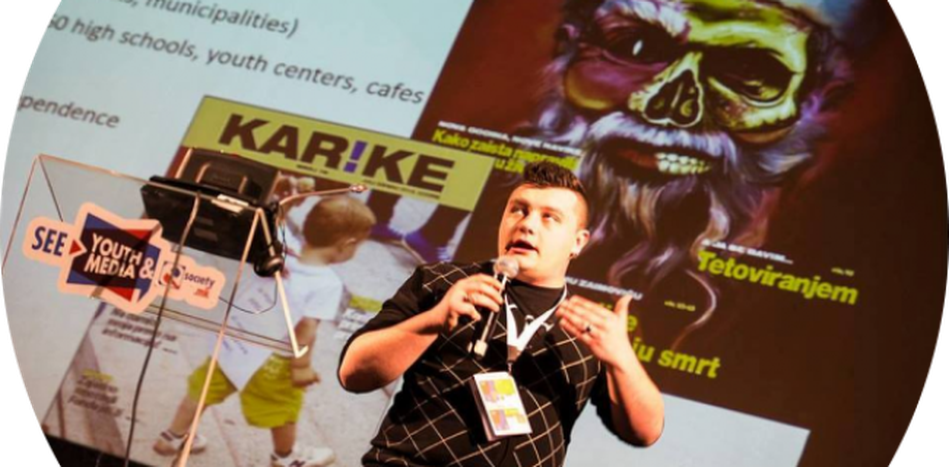
Youth Media Role is to Counteract Politically Corrupt Media!
Published on
Karike (The Links) is a youth magazine in production of a team of young people from Bosnia and Herzegovina and read and focused on young people in particular. It goes in print for six years already, in Bosnian/Croatian/Serbian language, and all the work regarding this youth magazine has grown as a firm example of a good practice for media led by youth.
Interview by: Stefan Alievikj
Edited by: Ana Alibegova
Karike (The Links) is a youth magazine in production of a team of young people from Bosnia and Herzegovina and read and focused on young people in particular. It goes in print for six years already, in Bosnian/Croatian/Serbian language, and all the work regarding this youth magazine has grown as a firm example of a good practice for media led by youth. The magazine work so far is all done through volunteering, thus this amazing team behind Karike promotes volunteerism in the same time. As our interviewee for this week on Mladiinfo we have our friend Haris Dedovic, editor-in-chief of this youth magazine. Here we go!
M!: How does the Karike story begins? When was the first number published and what was the main motivation behind, what goals you have set at the very beginning?
Haris: The story of Karike begins with the story of ONAuBiH (Youth Press Association in Bosnia and Herzegovina) and its beginnings. It was the first project of our Association as a direct media product. The first edition was published back in 2007. The motivation and the goals, at the beginning were to have the place where every young person in Bosnia and Herzegovina can address her/his problem, without censorship of any kind and without any journalistic experience. Now, it’s the same goal, but with some additional improvements and upgrades. Today, we want Karike to be that place, but we also want it to be the place where young people that work on the magazine will learn and gain their first experiences on ethical and professional reporting. Also, we improved in content sense. Now we don’t only address the problems, but also provide the relevant information that youth in BiH can’t read in mainstream media.
M!: Karike is mainly distributed in print. Can it be accessed on-line?
Haris: Karike can be found online, but in the form of PDF magazine at this webpage. Also, articles from Karike are being published on many news portals in the country. We are starting regional cooperation with online media at the moment, too. But, yes, that is the truth, Karike are periodical magazine which has its rules of reporting, analysis, editing and will not go online, except maybe in some extreme circumstances.
M!: Can we see Karike as a magazine that amplifies the voice of youth, especially when it comes to share of opinions by youth concerning politics; and is there also the space for other contents that could be read?
Haris: Karike are youth magazine and are really strict on that definition. That means that Karike are reporting on all the topics that concern young people. So, yes there is a significant amount of political articles, but there is also other topics that are important, relevant and interesting for the youth in BiH – NGO activities, self-employment, economy, health, environment, etc. The main goal of our magazine is to provide articles on topics that cannot be found in the media that we can read every day and are relevant for youth. And if that means politics – we report. If that means environment – we report. If that means space program – we report. It’s not a political magazine, it’s youth magazine.
M!: Can you make a comparison with other good media practices that you find similar with Karike and are based in other countries?
Haris: Hardly. There are, of course, a lot of good platforms for young people where they get information on good and relevant topics, Mladiinfo is one of examples, but I would say that Karike are different in the sense of style. Because we learn/ed from magazines such as Feral Tribune (HR), Slobodna Bosna (BiH), Buka (BiH), but in the terms of topics and social changes within the youth, we are mostly progressive. We try to be the mix of good “old school” style and “new age” movements that youth is always striving to.



